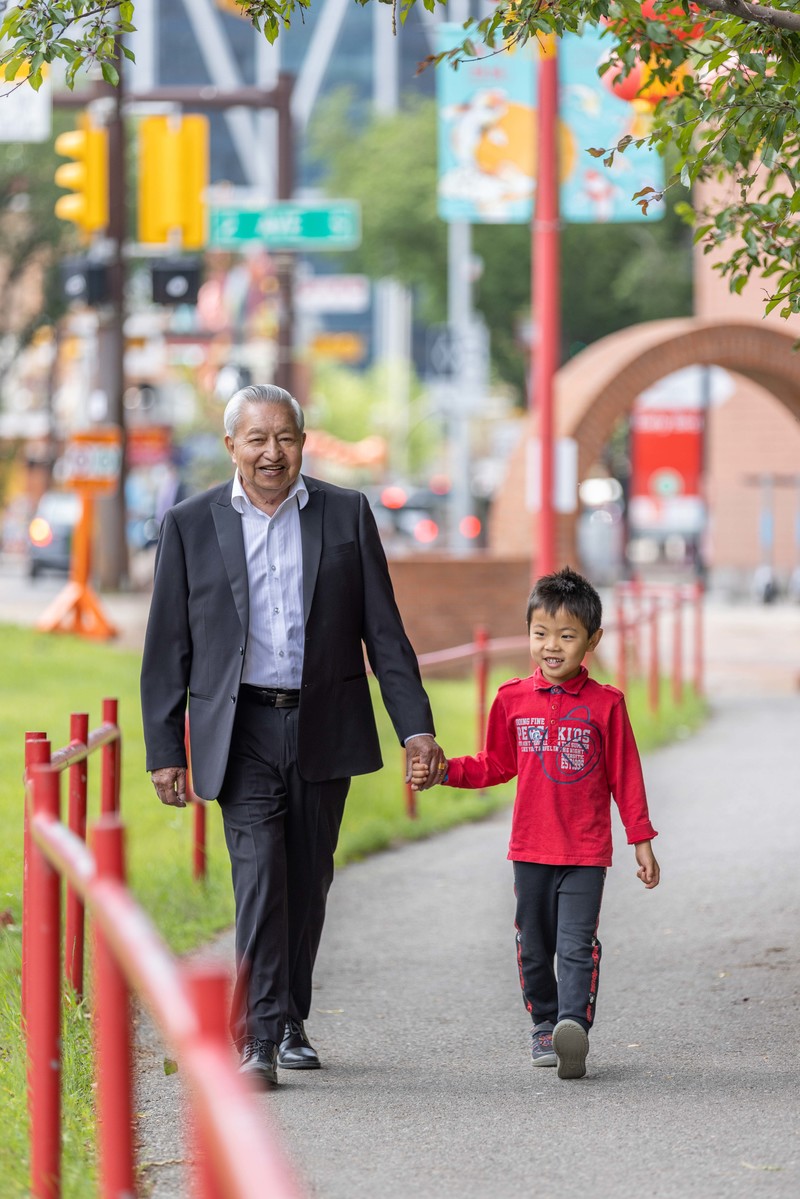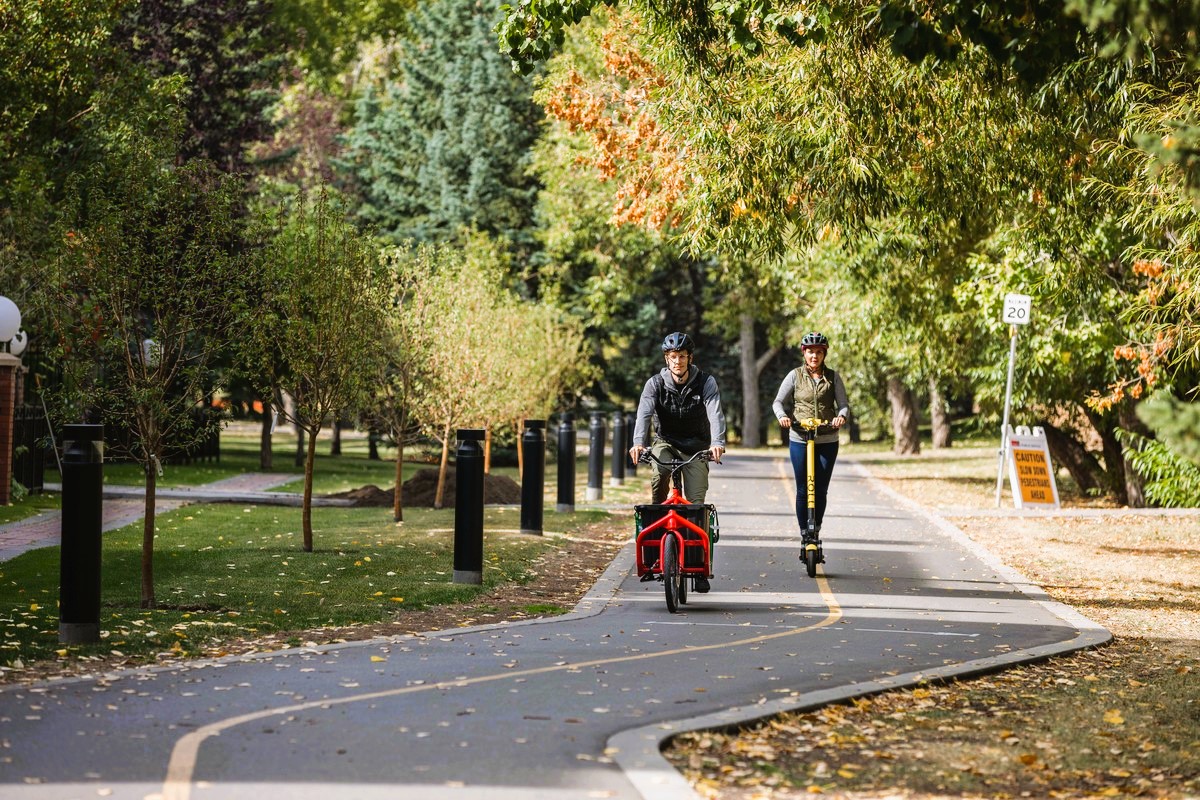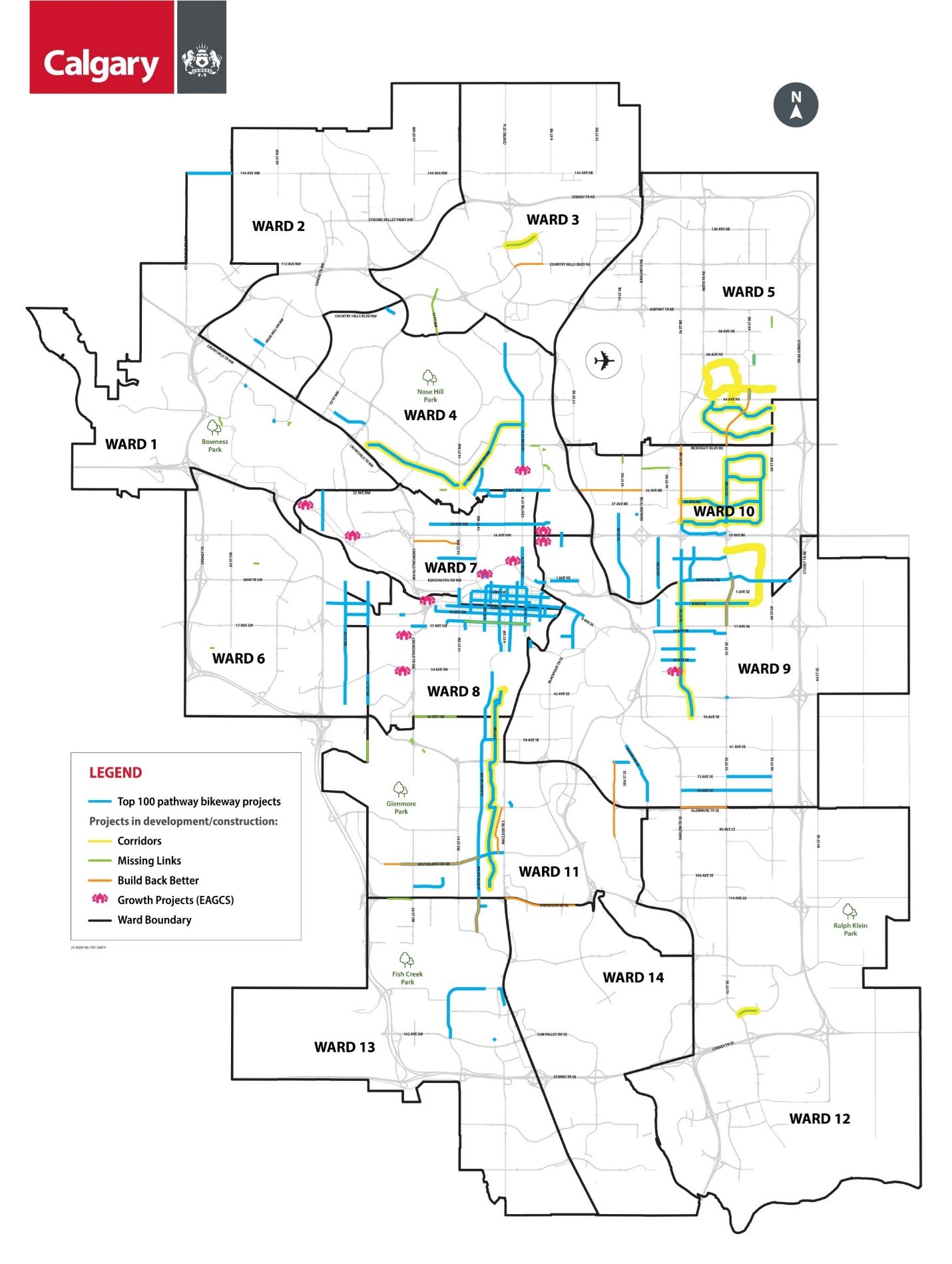Pathway and Bikeway Plan
What are we building?
We have several projects that are under construction or planned for construction in the near future. Please check here for current projects, plus you can check on any pathway closures or detours

Safer Crossings
Rectangular Rapid-Flashing Beacons (RRFBs) enhance pedestrian crossing safety by alerting drivers with flashing lights when a pedestrian is ready to cross. These lights, similar to emergency flashers on police vehicles, continue to flash as pedestrians walk through the crosswalk, ensuring drivers remain aware throughout the entire crossing.
Check out what we are building on the project page.
What are we planning?
We have several projects in the planning stage. We are working with communities, groups and organizations who will be impacted by new or updated pathway and bikeway projects, to develop and confirm new designs and upgrades.
Check out our map of our Top 100 Pathway & Bikeway Network projects
Useful Links – Calgary's Pathway and Bikeway Network
- Pathways and trails
- Pathways, Bikeways and Walkways Digital Map
- Pathways and Bikeways – Walk and Roll Map
- Pathway closures and detours
- Wheeling lanes, cycle tracks and bike lanes
- Pathways snow clearning
- Pedestrians and Crosswalks
- Cycling education programs
- Cycling signs, road markings and traffic signals
Related links
- Main Streets
- Transit Oriented Development (TOD)
- Local Area Plans
- Established Area Growth & Change Strategy (EAGCS)
- Active and Safe Routes to Schools
- Neighbourhood Streets policy
- Calgary and Area Pathway and Bikeway Plan Engagement
- 5A Network Guiding Principles Report
- Calgary Transportation Plan
- 50 Avenue S.W. Corridor Study
- 50 Ave S.W. Improvements
Contact us
Questions about Calgary’s pathway and bikeway network?
What is 5A?

We design our pathway and bikeway network guided by five principles: Always Available for All Ages & Abilities. These principles are the result of consulting with Calgarians and outlined in our 5A Network Guiding Principles Report.
These 5As are applied to our planning and design by;
- Separating people by their speed
- Making it more easy to use
- Being accessible for everyone
- Making it reliable
- Improving visibility




